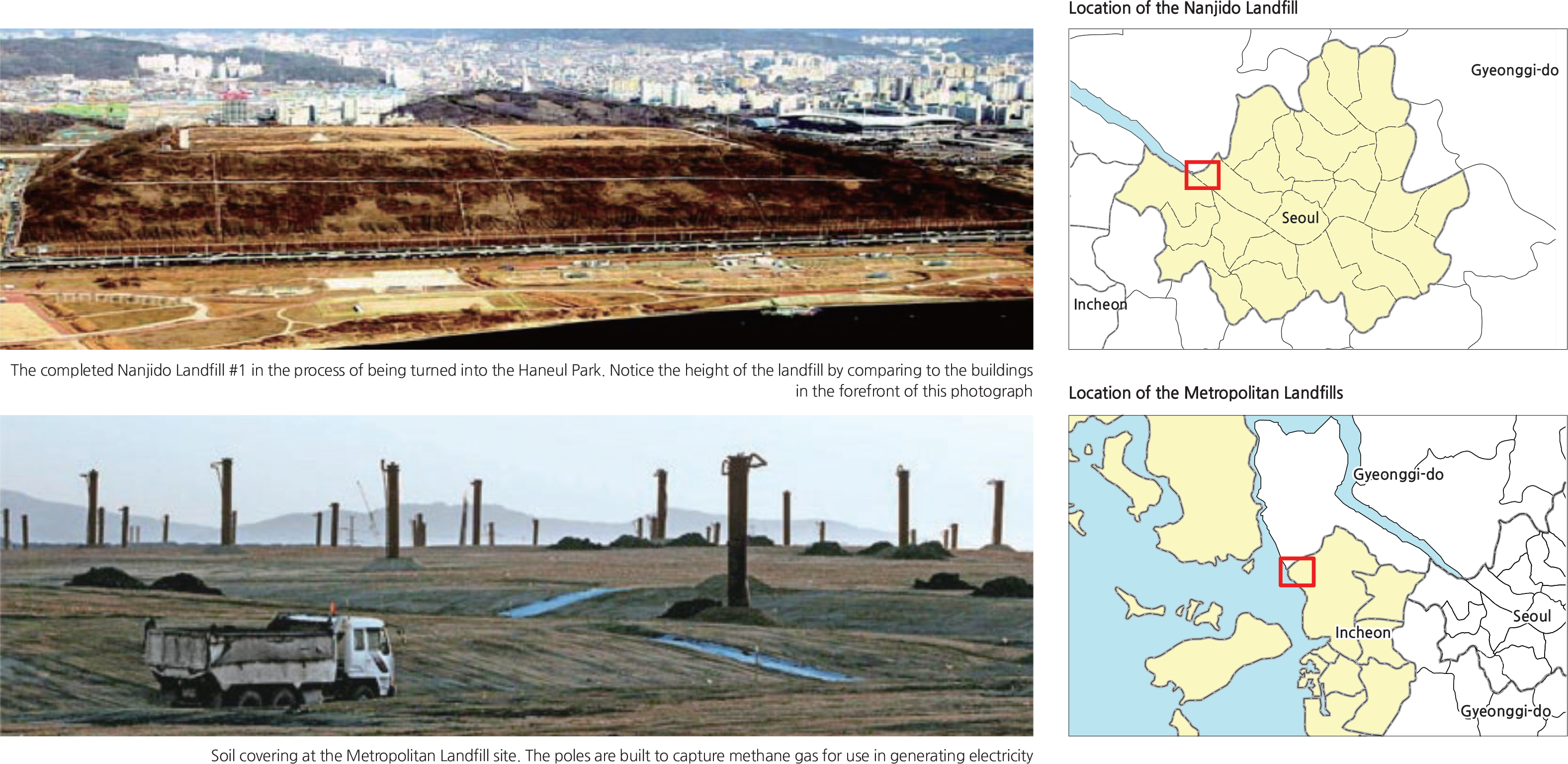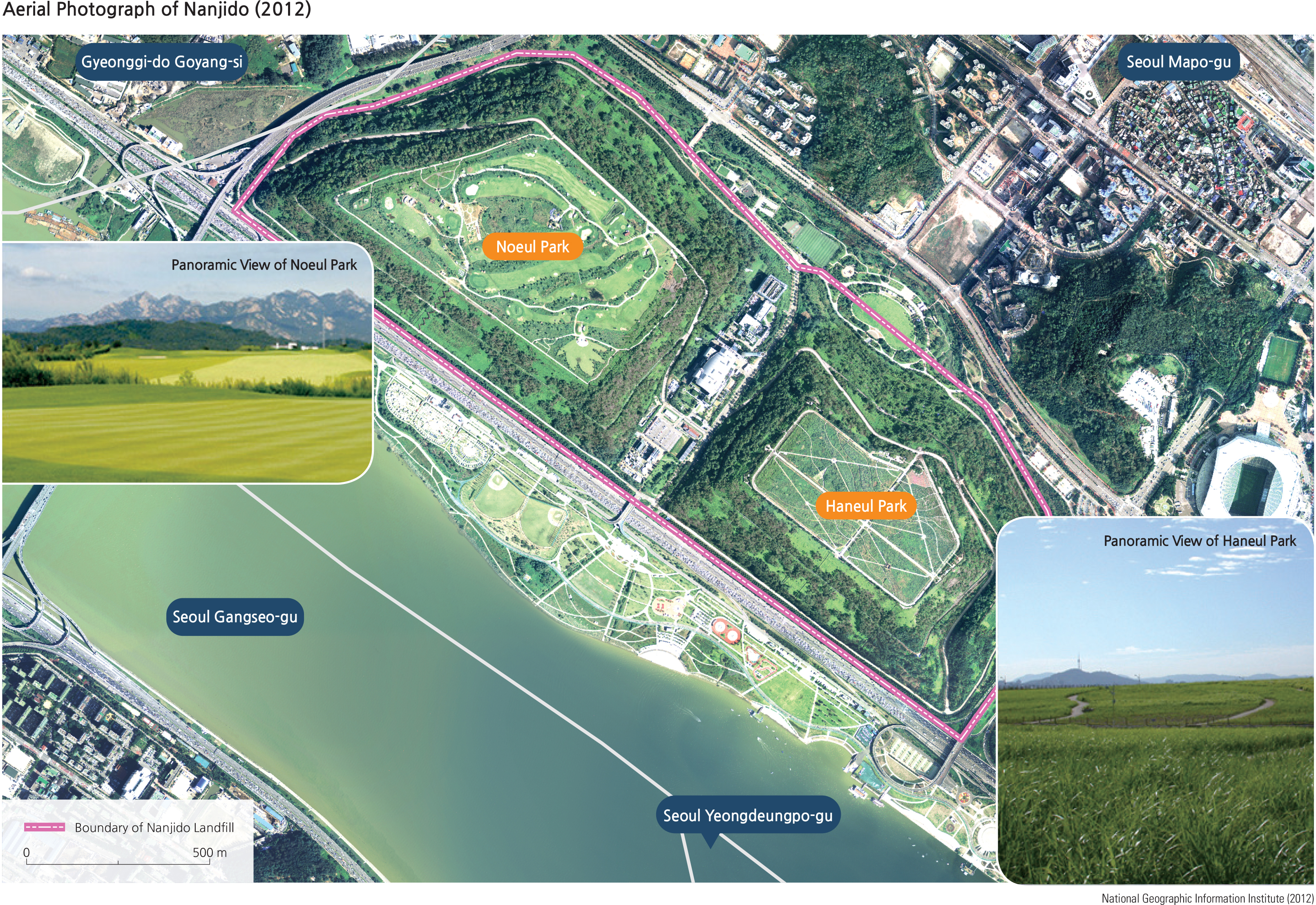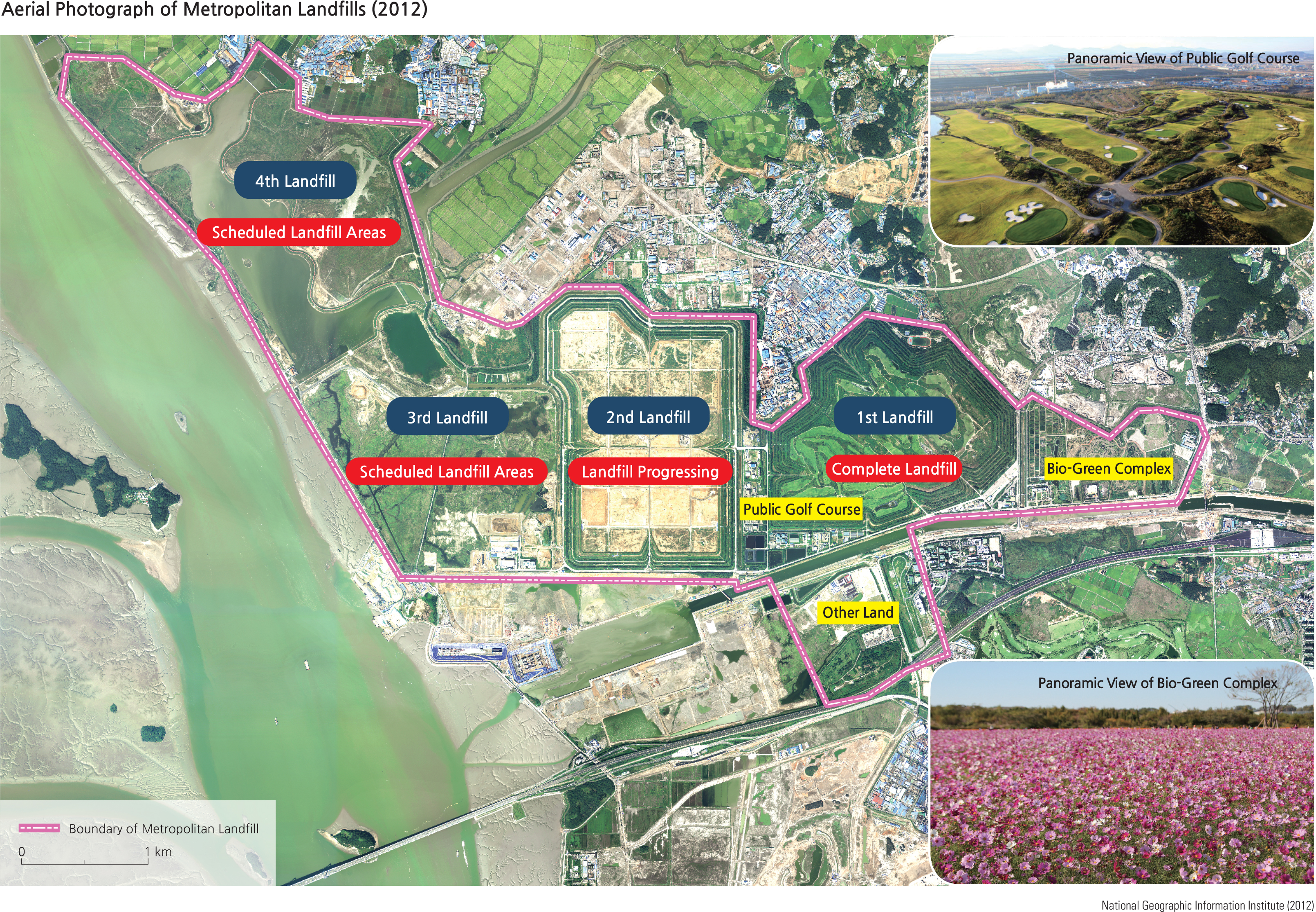As a reality of our daily lives, garbage or waste is produced at an alarming rate. Imagine the amount of garbage that is produced on a daily basis for a city such as Seoul with its over 10 million people. Where does all this garbage go after the garbage truck collects it? Improper disposal of garbage will hurt the environment, thus every government has a vested interest to properly manage the massive amounts of garbage generated by its population. Basically, there are three management methods: recycle and reuse the waste, incinerate it, or bury it in landfills. As can be imagined, there are pros and cons for each of these three methods. While recycling and reusing are deemed the most environmentally friendly method, they also incur a high cost involved in the sorting, transporting, and processing of recyclable materials. Incineration involves the burning of garbage; this method requires expensive initial investments in incineration facilities that comply with environmental laws. Ash and some forms of gas are by-products of burning. While ash can be collected through filters, some cancer-causing dioxins and other harmful gases are likely to be released into the atmosphere. The most effective and least expensive method is to dump all the garbage into a landfill where maintenance costs seem minimal, but other problems may be created.
Large pits are dug in the ground, and lined with layers of non-porous materials before receiving any garbage. When garbage is added, bulldozers run over it to make it as compact as possible. Landfills can be several square kilometers in area and accommodate garbage as high as 100 meters. At a height that is deemed to be no longer capable of accepting additional garbage, the landfill will then be closed by covering the top with enough soil to make it stable. Because decomposing garbage will produce methane, a greenhouse gas, steps are taken before closing the landfill to install pipes and processing facilities to capture the methane, and turn it into heat energy and electricity that can power homes. This method reduces the amount of a greenhouse gas that is released into the atmosphere and energy is gained. Once the landfill is closed, it can be turned into a park; but unlike reclaimed land, no heavy buildings should be built on top of landfills as the area is not stable enough for such building weights.
The selection of landfill sites can be a challenge. During the years before it can be closed, people in surrounding areas will have to contend with its odor and the heavy traffic of garbage trucks. A site that is too far from the city will require higher travel time and costs for garbage trucks and fewer trips per day. For Seoul, there are two major areas that house landfills nearby. They are the Nanjido Landfill and the Metropolitan Landfills.
Nanjido, formerly used as a landfill site for Seoul and northern Gyeonggi-do, is currently established as an ecological park. After it was first designated as a landfill on August 3rd, 1977, the site received 110.5 million tons of waste over the next 15 years until the landfill was finally closed on March 19th, 1993. Within the 2.9 square kilometers of area reserved for the landfill, two huge waste mountains collectively spanning 1.75 square kilometers had been piled up with waste. This changed the elevation of Nanjido from 8 m to 98 m. The Seoul government built an ecological park on top of the closed site, now known as the Nanjido World Cup Park. This park features five theme parks. Currently, stabilization work is in progress and is scheduled to continue until 2022. Methane gas and other substances released from the closed landfill are used as heat energy sources for facilities at Nanjido World Cup Park and Seoul World Cup Stadium.
The Metropolitan Landfills—constructed beginning in1989 and opened in 1992—were established to complement the Nanjido Landfill. Consisting of four landfills, this system is the largest waste landfill project in the world by total area. The first, second, and third landfills are located in Geomdan-dong, Seo-gu in Incheon. The first landfill was closed in 2000, and the second landfill is currently in use. The fourth landfill will be located in Daebeok-ri, Daegot-myeon and Hakun-ri, Yangchon-eup in Gimpo-si. Although the Metropolitan Landfills were initially scheduled to be closed by 2016, measures such as the introduction of a volume-rate cost for garbage disposal system and enhanced recycling greatly reduced the volume of waste that was accumulated and processed during the 1990s and 2000s. Consequently, on June 29th, 2015, the local governments of Seoul, Incheon, and Gyeonggi-do agreed to extend the term for the Metropolitan Landfills to 2025. They also determined that additional local landfills will be prepared before the end of the term. The closed first landfill has been converted to a wildflower garden and a sports park that now serves as a leisure site for local residents.
Since the early 2000s, South Korea is making a major effort in decreasing the amount of solid waste by enforcing the separation of the different components of solid waste at its sources. A major focus on household waste has produced different types and sizes of disposal bags for homes. Waste is separated into food, combustibles, recyclables and noncombustible components at the grass root level so that waste management and recycling can be more efficient.
As a space-limited country, South Korea is also working toward other methods of solid waste management that avoid further expansion of the area required by landfills. In small villages and cities, landfills will continue to play a role in a growing population and will likely always be a cost effective method where land is available. However, other methods of waste management may be available but associated with higher investments and require larger populations to make them cost-effective. In most large urban centers programs for decreasing wasteful packaging and plastic packaging are already underway.
Recycling in an environmentally conscious society will play an increasing role as technological methods for sorting and reusing waste are improved. One method of decreasing organic waste is by commercial and home composting, turning scrap and wasted food into natural fertilizers while decreasing the amount of solid waste. Another method of decreasing the use of landfills is the incineration of appropriate solid waste to generate heat; this heat may be used to drive electric generators while decreasing the amount of imported fuels for electric plants. However, in South Korea only about a third of the approximately 250 combustion plants are currently being used to generate electricity, while the balance of the plants are primarily incinerating the waste to only reduce the amount of combustible materials that will be disposed of in landfills.
Brief Interpretation of the Aerial Photographs
The appearance of a landfill is hard to disguise even after its capacity has been reached and development for a different function has begun. Even though a different function can be introduced after completion such as a golf course or a nature park, the transition is primarily on the surface and masks long term effects. Because of the contents of the landfill, the natural evolution of a soils profile through biological processes is not possible, severely limiting the future of a completed site.
The use of landfills for disposing solid waste has a number of constraints. Discuss several of the stringent limits to the location and use of landfills near urban centers. Are these limits the same in rural communities?


